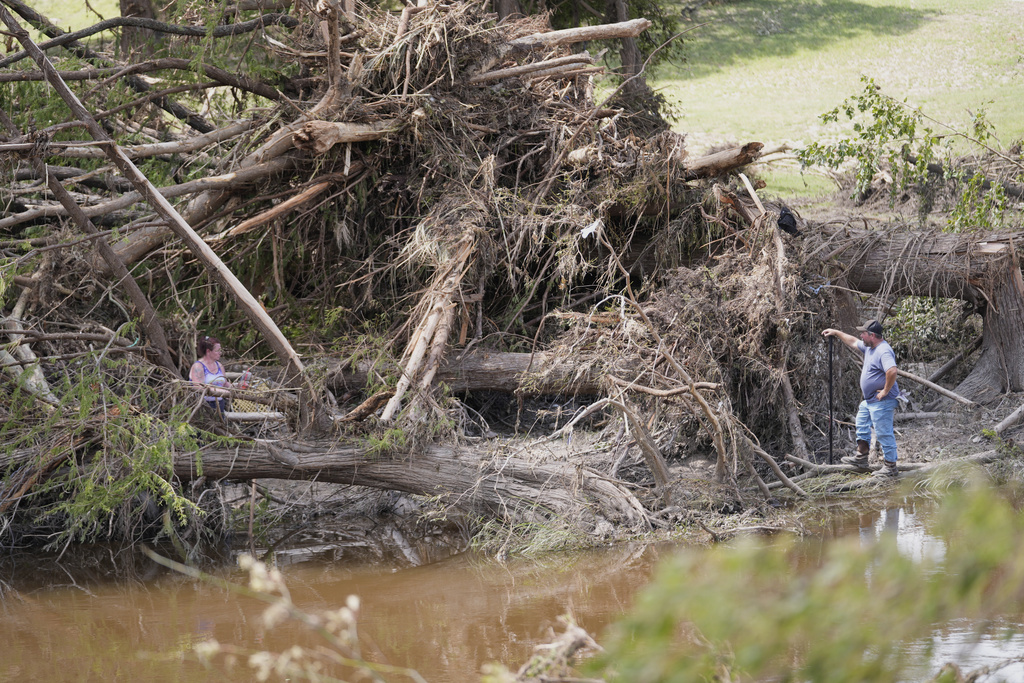A Decade of Missed Chances: Texas Lacked $1M for Flood Warning Near Camps

A Missed Opportunity for Flood Protection in Kerr County
Over the past ten years, several Texas state and local agencies have missed critical chances to fund a flood warning system that could have prevented a devastating disaster. This system was designed to protect the residents of Kerr County and thousands of youth campers and tourists who visit the area along the Guadalupe River, known as “flash-flood alley.” Despite the potential to save lives, these agencies repeatedly failed to secure approximately $1 million for the project.
The cost of the flood monitoring system was comparable to what the county spends on courthouse security every two years or about 1.5% of its annual budget. However, the lack of funding left the community vulnerable when heavy rains hit the area on the morning of July 4, leading to a catastrophic flood that claimed dozens of lives, including many young campers.
Lessons from Past Disasters
A deadly flood on Memorial Day in 2015 reignited discussions about implementing a flood monitoring system and sirens to warn the public of rising water levels. Some officials, aware of a 1987 flood that killed eight people on a church camp bus, believed it was time to act. However, the idea faced resistance from some residents and elected officials who were concerned about the cost and noise associated with frequent alarms.
County commissioners sought a compromise by proposing a warning system without sirens, focusing on improved flood monitoring through sensors. However, they lacked the necessary support to move forward with the project. The county’s largest city, Kerrville, declined to participate in a joint grant application that required a $50,000 contribution. Additionally, the state’s emergency management agency twice rejected the county’s request for hazard mitigation funding, prioritizing communities affected by Hurricane Harvey in 2017.
A Series of Rejected Opportunities
Despite multiple attempts, the county struggled to secure funding for the flood warning system. The state's flood infrastructure fund offered an interest-free loan for the project, but the agency responsible for managing the watershed found the terms too restrictive and turned it down.
Without the system in place, the county was unprepared when the river rose rapidly during the July 4 flood. Nicole Wilson, a San Antonio mother who evacuated her daughters from a camp ahead of the flooding, launched an online petition calling for the installation of sirens. She emphasized the need for a collaborative effort involving city, state, and federal funding to prevent future tragedies.
Local authorities and Texas Governor Greg Abbott have urged the public not to assign blame after the flooding, which resulted in at least 120 deaths and numerous missing persons. Glenn Andrew, a former Kerrville city council member, expressed his preference to focus on the future rather than dwell on past failures.
Promises of Future Action
Texas Lt. Gov. Dan Patrick’s spokesperson stated that lawmakers would consider funding for such projects during a special session later this month. The spokesperson noted that the state would provide emergency warning sirens where needed. However, some residents remain frustrated, questioning why action wasn’t taken despite repeated discussions.
Raymond Howard, a city council member in Ingram, Texas, called it “unfathomable” that county officials never took action despite the risks. He argued that if funding was an issue, the county should prioritize it over other tax-raising initiatives. For Howard, any future action would come too late for those who lost their lives.
Funding Challenges and Missed Chances
Kerr County applied for a flood warning system grant in 2016 through the Texas Division of Emergency Management’s hazard mitigation program. However, the application was rejected due to not meeting federal specifications, including the requirement for a current hazard mitigation plan. The county hired consultants and engineering firms to prepare another application for the 2017 funding cycle.
The proposed system would have provided mass notifications to citizens about high water levels and flooding conditions throughout Kerr County. Sensors at low water crossings would have transmitted signals to monitoring stations, allowing officials to alert the public and contact youth camps and RV parks during emergencies.
However, after Hurricane Harvey caused widespread flooding in Houston and other areas in August 2017, funding was directed to counties included in the disaster declaration, which did not include Kerr County. The City of Kerrville’s council voted unanimously to decline participation in the grant proposal, citing the planned $50,000 contribution as a barrier.
In 2019, Texas voters approved a constitutional amendment to create a state flood infrastructure fund with an initial $800 million investment. The Upper Guadalupe River Authority revived the project last year with a $1 million funding request. The Texas Water Development Board offered a $50,000 grant and a $950,000 interest-free loan for the rest of the project, but the river authority declined the offer, stating the terms were not favorable.
Post a Comment for "A Decade of Missed Chances: Texas Lacked $1M for Flood Warning Near Camps"
Post a Comment